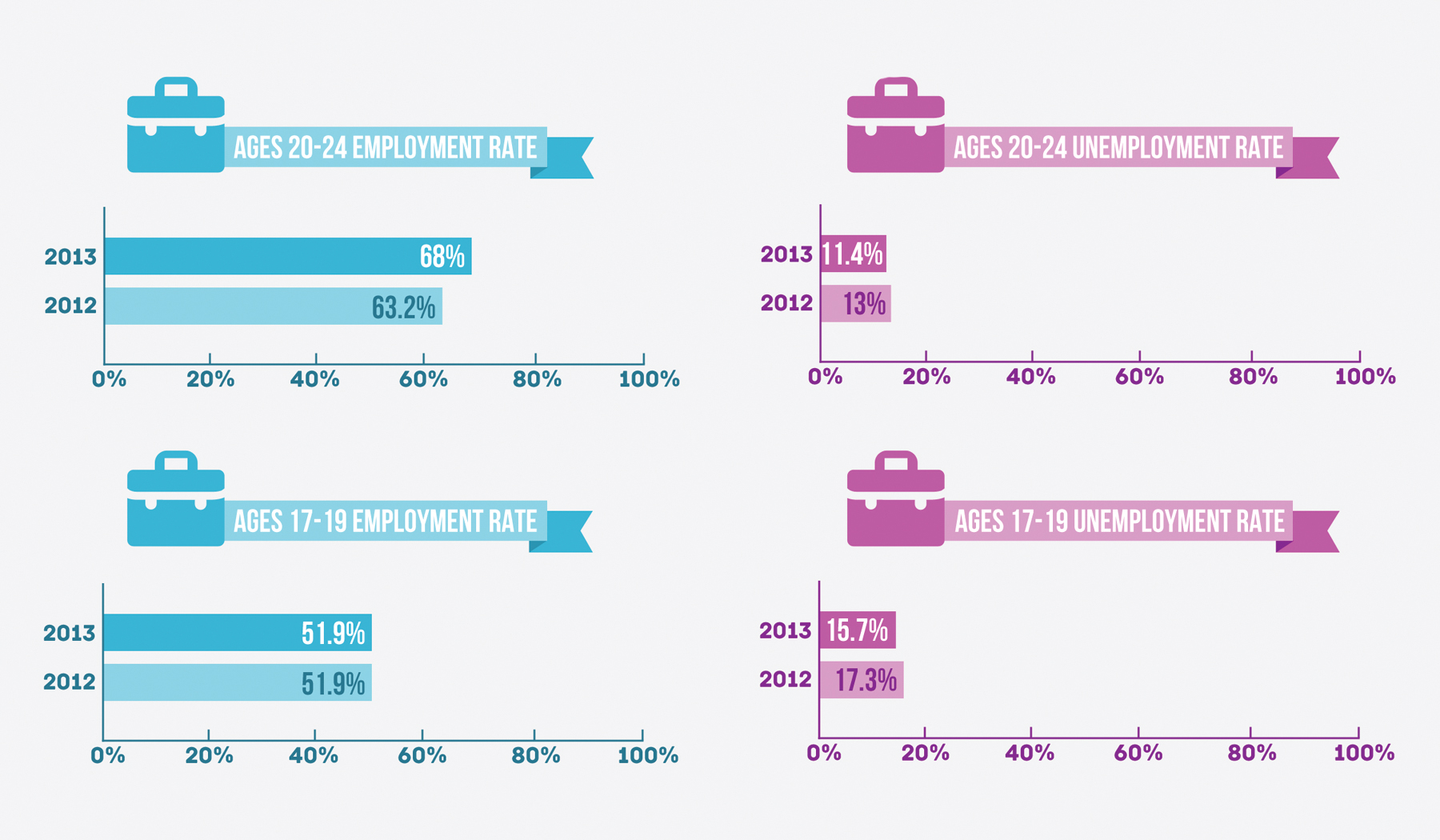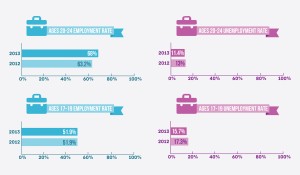Facing summer unemployment


Students across Canada were faced with relatively high levels of unemployment this summer, a trend that has changed only minimally from last year.
The over-saturated summer job market left many students out of work or scrabbling to find two or even three part-time positions.
While youth unemployment rates have marginally decreased from last year, many students have been unable to find full-time positions, posing a challenge for those returning to school this fall. With steep tuition rates, many are forced to resort to student loans to make payments on time.
“The unemployment rate in July 2013 was 16.6 per cent and that is slightly lower than last year with 16.9 per cent, which is not a significant change,” explained Jeannine Usalcas, Statistician with the Labour Statistics Division at Statistics Canada. “The summer before that it was 17.4 per cent, so it’s been gradually declining.”
The Labour Force Survey collected labour market data focused on young people between the ages of 15-24 who were attending school full time in March and who will be returning full time in the fall.
Usalcas explained that while youth unemployment rates are gradually declining, the nature of the work has changed. “The hours are less for those that are working. There are more youths working part-time in all of the age groups,” she added.
Sabrina Wilkinson, a fourth year English and communications major at Wilfrid Laurier University, was among one of many students who took on two part-time positions this summer.
“You feel like you’re always at work, or always coming back from work, or in between shifts,” she shared. “It felt like you were working so many hours because of the irregular schedule, but it ended up being less than working full time,” she said.
The unavailability of full time summer positions results in an increased number of students working part-time throughout the school year; a daunting task given the demand of full-time coursework.
Rylan Kinnon, executive director of Ontario Undergraduate Student Alliance (OUSA) explained to The Cord that student unemployment rates continue to be a growing concern among youth in Ontario.
“We looked at student unemployment rates last summer and it actually was the second worst summer on record for student unemployment. Which obviously was a concern with our members last year and it does look like the data is quite similar this year in terms of student unemployment being quite high,” Kinnon said.
Youth unemployment rates are highest among 15-16 year old students, with a staggering statistic of 30 per cent, which has declined from last year’s 31.2 per cent.
Usalcas explained that while these rates are very high, they are not unusual given the experience level of students within that age group.
“They usually have a high unemployment rate because they are the first ones in, they have less experience and employers are more likely to hire the more experienced, older students. So they have the toughest time in the labour market,” said Usalcas.
The lack of summer job opportunities has left many students fearful for their employment options after graduation.
Kinnon, however, views a distinction between the summer labour market and the market that will become available to students upon the completion of post-secondary education.
“I think the summer job market is somewhat of an entity into itself,” said Kinnon. “But I know that our students have definitely brought up as a significant concern what employment outcomes will be upon graduation.”
Student unemployment rates were highest in Ontario and Nova Scotia for the month of July, with Ontario at 20.1 per cent and Nova Scotia at 20.3 per cent.
The province with the lowest rate of unemployment is Alberta with 8.8 per cent.

